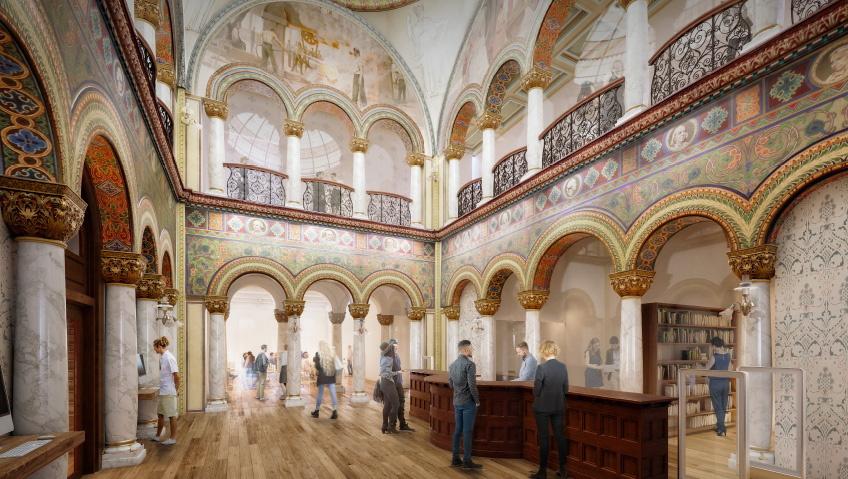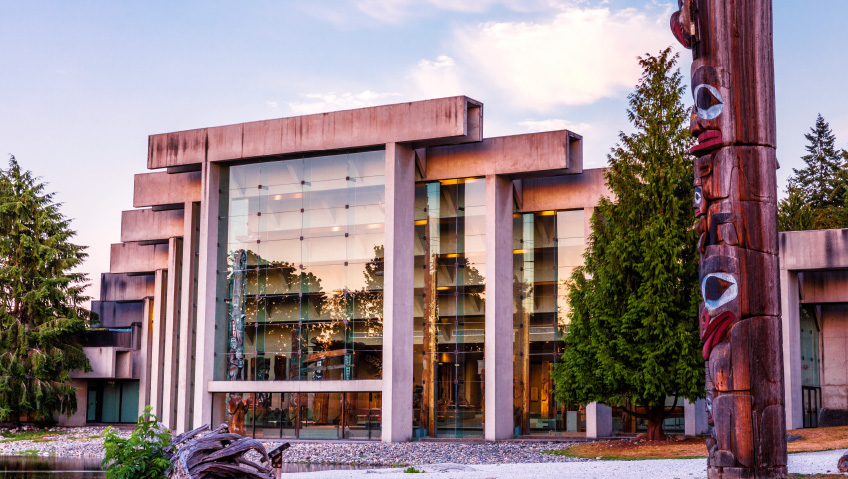Through a focus on quantifiable project management, creative problem solving, and unwavering responsiveness, Bailey Edward’s architectural team creates environments that empower and excite the people who inhabit them. Formed in 1991 and based in Chicago, Illinois, this woman-owned company has since evolved into a full-service architecture, planning, engineering, and interior design firm boasting a team of diverse professionals who can assist with everything clients need, from concept to construction.
Whether it’s planning, engineering, or interior design, collaboration is key within this complete design team to integrate all system components into workable, sustainable solutions. The team executes the client’s vision with an integrated approach, fostering personal connections and recognizing the impact of furnishings, finishes, and colors on creating distinctive spaces that improve people’s lives, workplaces, and educational experiences.
The company has also instilled a sense of pride and belonging at work by prioritizing teamwork and professional growth. A Buddy Program and mentorships mean that new hires can connect with seasoned designers, making it easier for everyone to communicate at all levels.
“We’re a woman-owned firm founded by Ellen Bailey Dickson, while Robin Edward Whitehurst joined about a year later, which is where the company name comes from,” explains Karla Smalley, Principal. “The early work was a lot of residential and retail, and we grew into what their vision of the firm was, which is committed to serving clients that are mission driven, such as government, education, and military.”
When it comes to projects, the company embraces an approach whereby design begins with investigation, understanding each challenge a project may bring, explains Stephanie Allston, Architect. “This means creating an interconnected architecture on all levels: the ecology of the site and the people inhabiting it. Then we use our knowledge, expertise, and passion for innovative design to improve the built environment for the social good,” she says.
Bailey Edward’s historic preservation work echoes this approach, with projects such as the Pullman National Historic Site, located south of the city and enshrining the workman’s heritage. Other projects include the Illini State Park, and the company is currently working with the National Trust for Historic Preservation and the Lilly Foundation, hoping to help as much as it can with the preservation of Black churches in Alabama, California, and Kentucky.
“We’re also working on a couple projects in Champaign, one of which is the University of Illinois Urbana-Champaign Altgeld Hall—higher education and more accessible spaces,” says Allston. “And there’s Chaco Culture National Historical Park in New Mexico, a project to make sure we’re respectful of that land and the heritage of that site, because it’s a UNESCO World Heritage site as well.”
The company as a whole strives to embrace respect when approaching each and every project, she stresses. “I think a lot of what Bailey Edward stands for is understanding and being sensitive to the culture of each project, no matter how varying and how different it is.”
Being culturally aware also extends to the overall company culture, which enables the team to approach each project with the care and concern it deserves. “I think the company culture really focuses on supporting our staff in their creative ventures, in their education, and in the direction they want to take their careers,” says Smalley.
“We do have a lot of working groups aside from that to expand our company from the inside out as well,” Allston adds. This includes the Excellent, Meaningful, Beautiful group, designed to “create the highest quality product possible,” starting with the standards used to create Bailey Edward’s work. “We have a lot of people at our company interested in renderings and that technology, and it’s about finding those strengths and passions within the company, using that together, and collaborating to see how that can help benefit Bailey Edward as a whole.”
There is also the Drawing Standards Team for those who are more technically minded and want to look at standardizing some of the drawings Bailey Edward produces, along with the Well-Oiled Machine group, Culture Club, the Strategic Planning group, and the Healthy Building groups for those passionate about sustainability and the healthy buildings initiative.
And maintaining a strong company culture extends to other vital areas as well. Other architectural disciplines don’t necessarily require the high level of technical proficiency and subject-specific knowledge needed for historic preservation. To assist with such a challenging field, professional development is encouraged for all staff members, both administrative and technical. Every employee has access to paid education time and an educational stipend, which are scheduled and reviewed during the person’s yearly performance review. In addition to the stipend, staff members seeking an architectural license receive industry-leading study materials, mentorship from licensed architects, exam fee reimbursement, and a bonus upon obtaining their license through the company’s profession-specific licensing aid programs. Bailey Edward aims to eliminate as many barriers as possible between its employees and their licensure.
“Our staff have hands-on experience with tools like Matterport scanning and destructive and non-destructive testing,” adds Sara Gaum, Associate Principal. “We support licensure within our firm, which is extremely important in architecture because a lot of women do not get their licensure, and we have numerous licensed women architects within our firm.”
In terms of educating staff, the company also ensures there is a broad understanding of all areas, so even if someone leaves the company, they have a richer skill set and are better equipped to take care of these buildings throughout their career.
Bailey Edward is also heavily invested in the American Institute of Architects (AIA) 2030 commitment within the architecture community for carbon neutrality. “It’s a goal you can elect into in architecture firms across the country, looking at how this impacts design for buildings and our industry as a whole,” says Allston.
The main aim is carbon neutrality by 2030 and focusing on the design and performance of existing and new structures, utilizing a reporting and measuring system called the design data exchange (DDX) that helps track elements internally and shares data with AIA to track performance on project energy performance, something that’s very important to Bailey Edward as a firm.
“As far as historic preservation, a lot of it comes from assessing the existing building’s energy performance,” Allston explains. “We have historic buildings that may have unique structural elements that can affect energy, and the building’s age is going to affect material designs.” The goal is often to create a modern, efficient HVAC system and integrate it into the historic structure without ruining the character.
Bailey Edward stands out in this regard, differentiating itself in terms of its expertise and how it trains its staff, adds Gaum. It comes back to company culture and the desire to be supportive of staff. This includes providing a flexible work schedule. “If someone is going after license, there’s time set aside for them,” she says. “There’s compensation. There are things we put into our structure that are available to everybody but historically would maybe have been limited to men at other firms. But they’re not limited at our firm.”
“We try to keep it fair and equitable across all lines such as gender or race,” adds Smalley. “It’s just people doing a really great job at what they’re passionate about, and that’s really what we want to support.”
There is also an allowance for education to help those interested in various topics connected to historic preservation, such as an upcoming conference about window enclosures. This unique combination of company culture and supporting creativity and education has continued to serve the company over the years.
“It’s the hands-on learning as well,” says Allston. “It’s working with all of our staff members to train them in all of the different things we provide, whether it’s laser scanning or writing different reports like facility conditions assessments or historic structures reports, and training each of our staff members in how to do research too, especially because that’s important with our documentation of historic structures.”
Bailey Edward also boasts a very diverse portfolio, moving across sectors doing historic preservation work for the government and local municipalities, performing work for research institutions, and doing historic preservation in a building that is still being used for highly sensitive research.
“We’re also within healthcare,” says Gaum. “We do have a very diverse portfolio, and yet still have extremely qualified staff who are able to address challenges specific to those buildings.”
But it is the company’s unwavering dedication to preservation and comprehending why it is so vital that sets it apart in a society sometimes determined to destroy instead of defend.
“It’s important to preserve our history,” stresses Allston, adding that the Bailey Edward historic design philosophy is that buildings are the ‘visible history of our culture.’ “They’re storytellers. They’re reflections of our culture and the people that use them, the communities that have created them, and those people and communities that continue to use those buildings. We’re those buildings’ temporary caretakers, and it’s our responsibility and our passion to make sure those buildings and those stories endure for future generations, restoring them so they last the next 100 to 200 years.”






